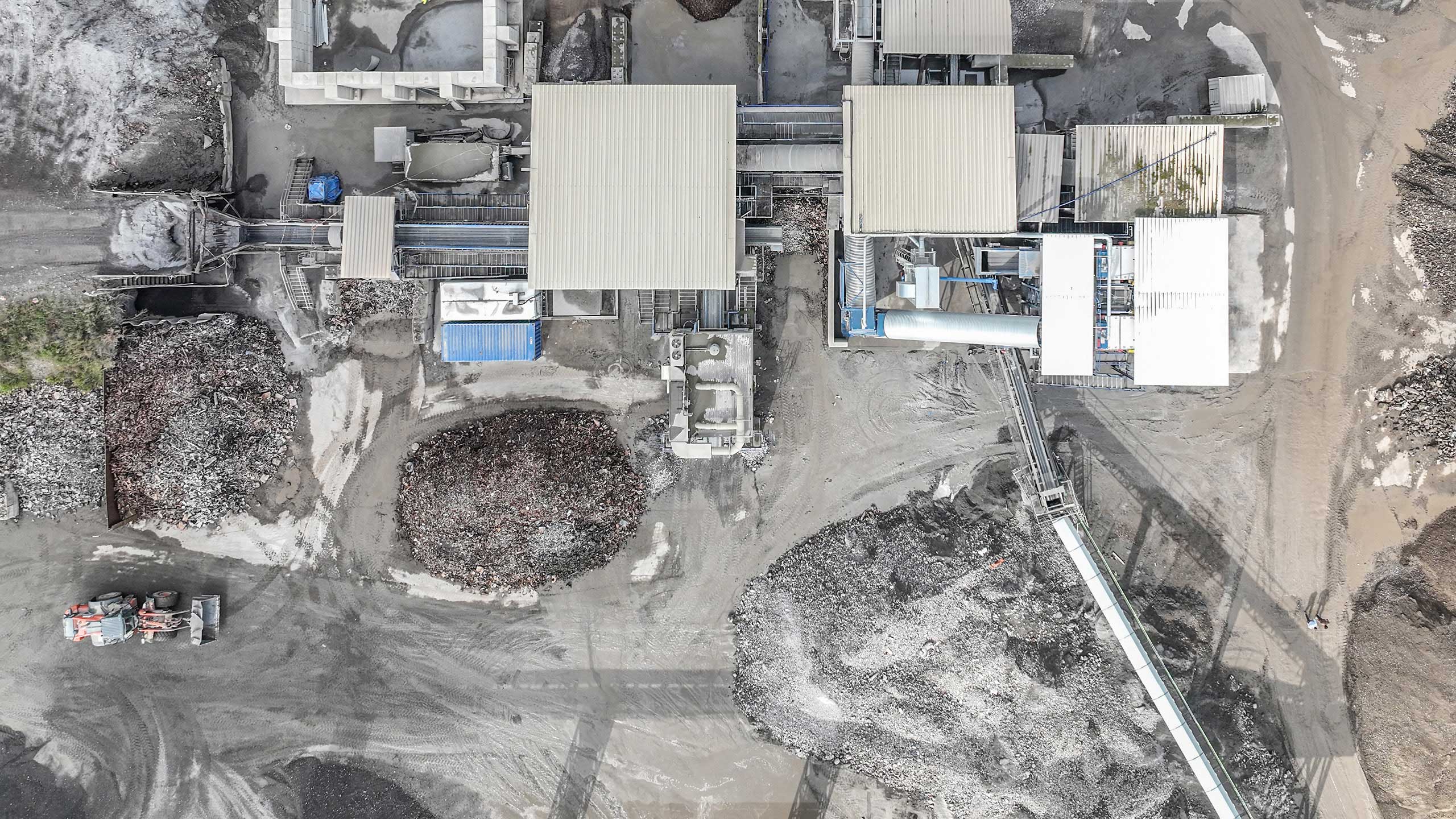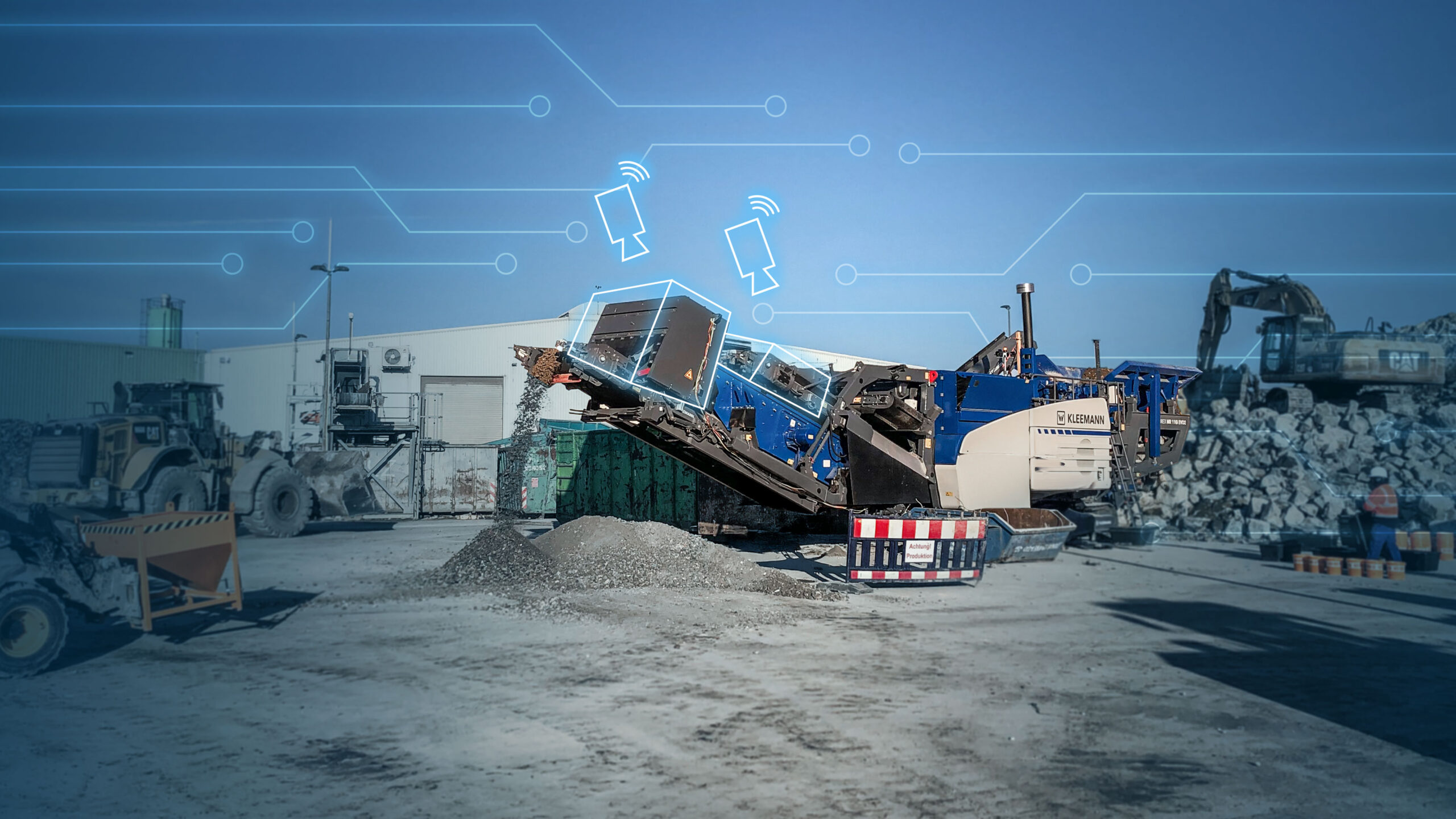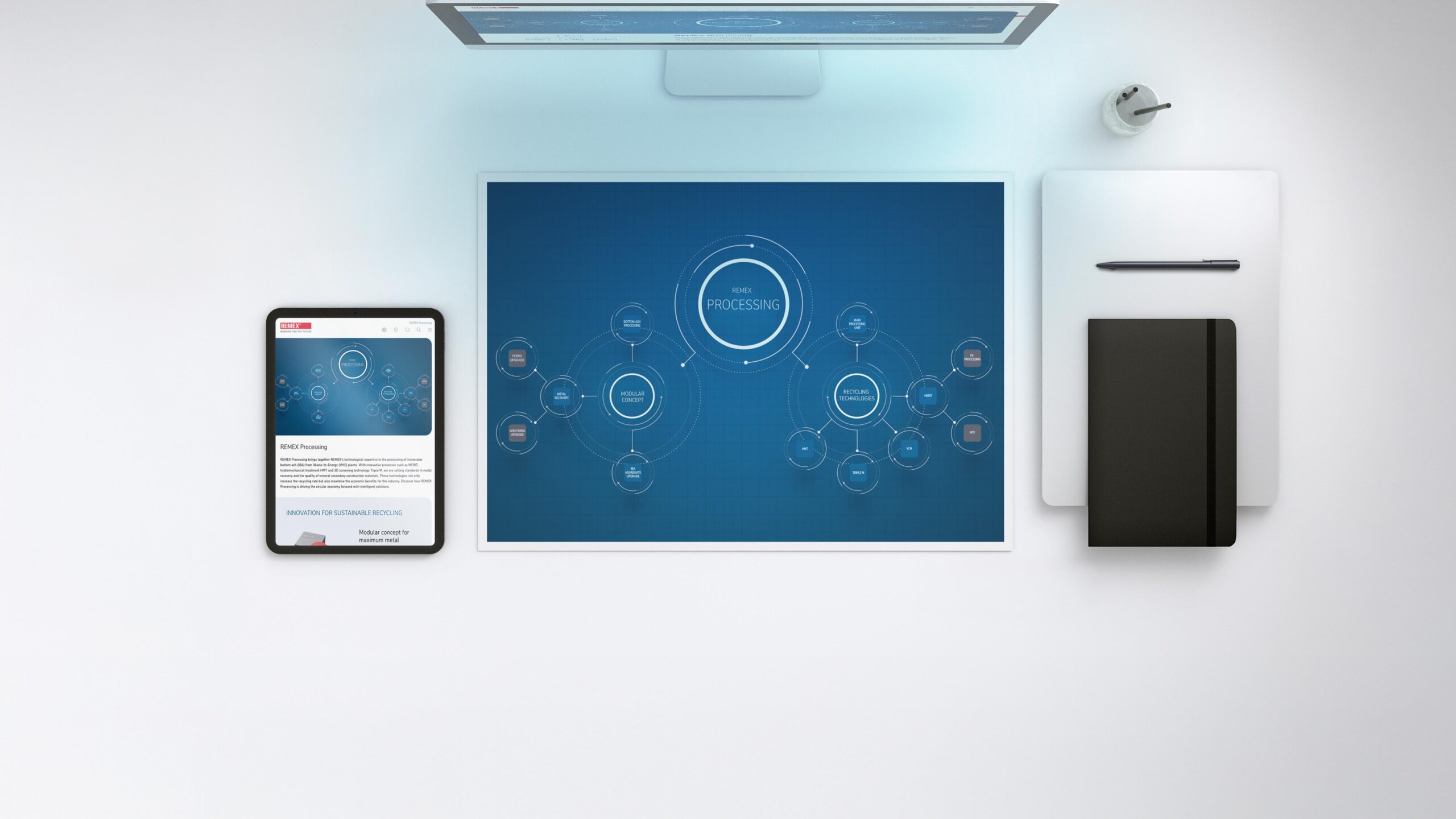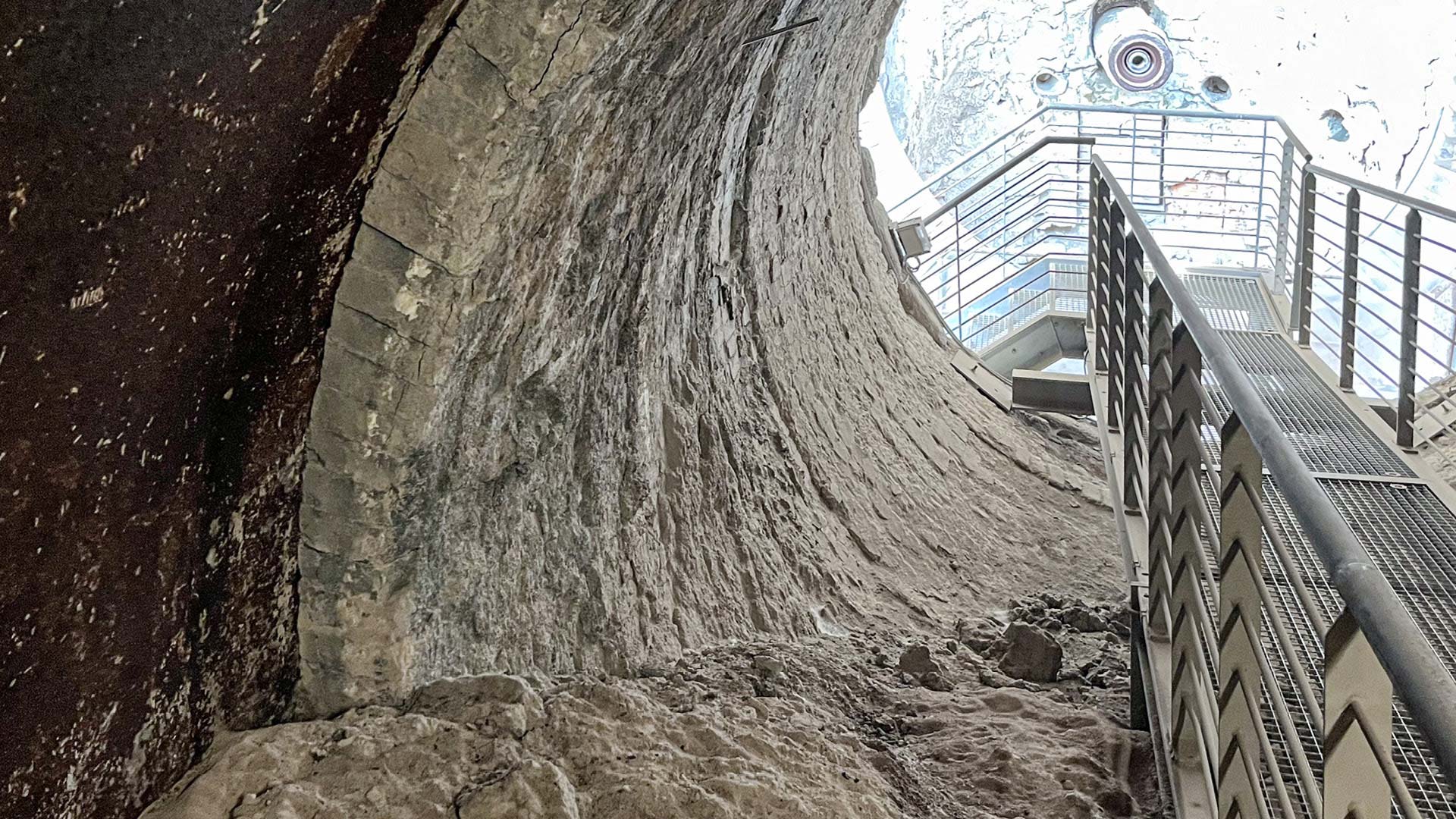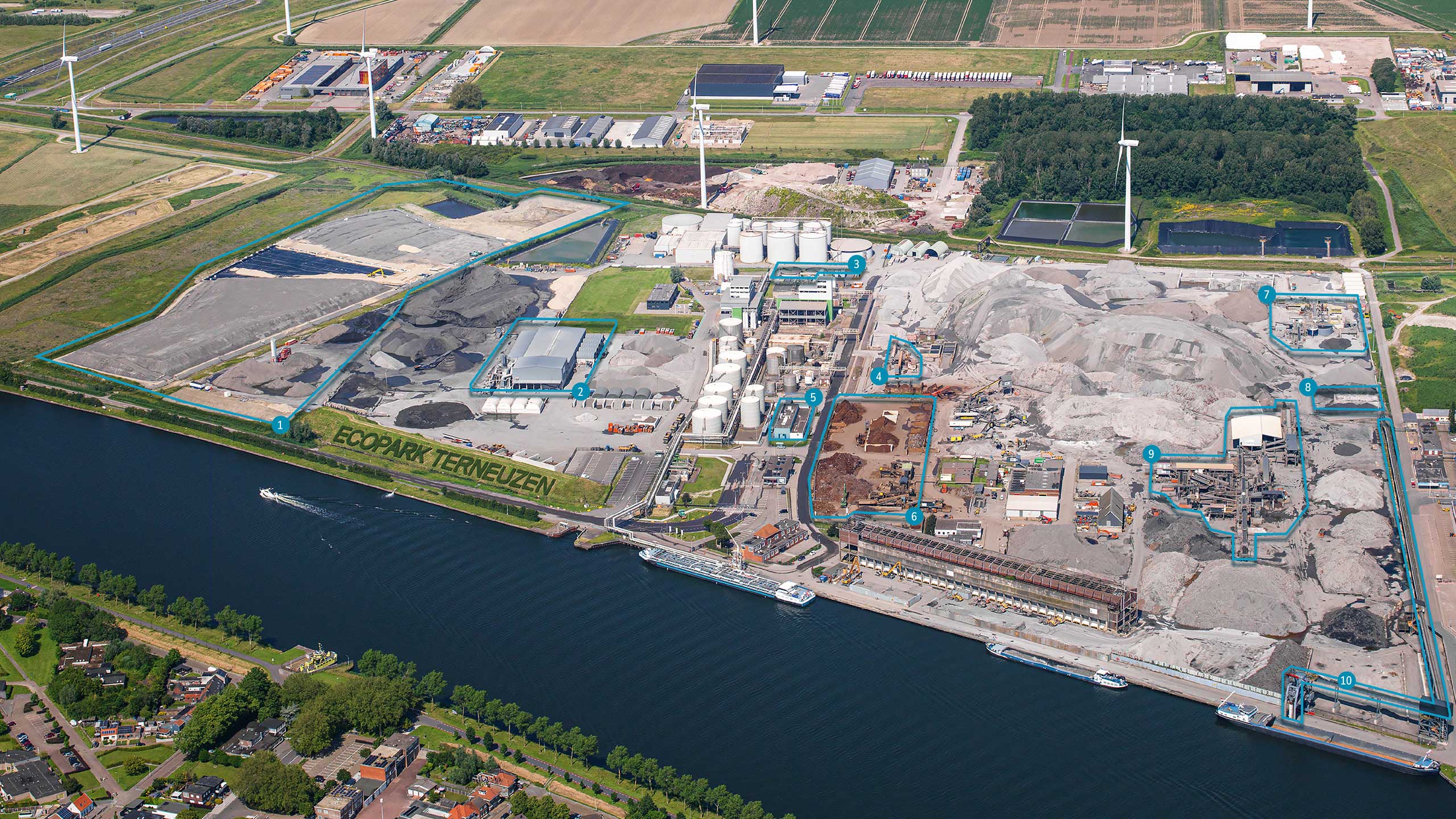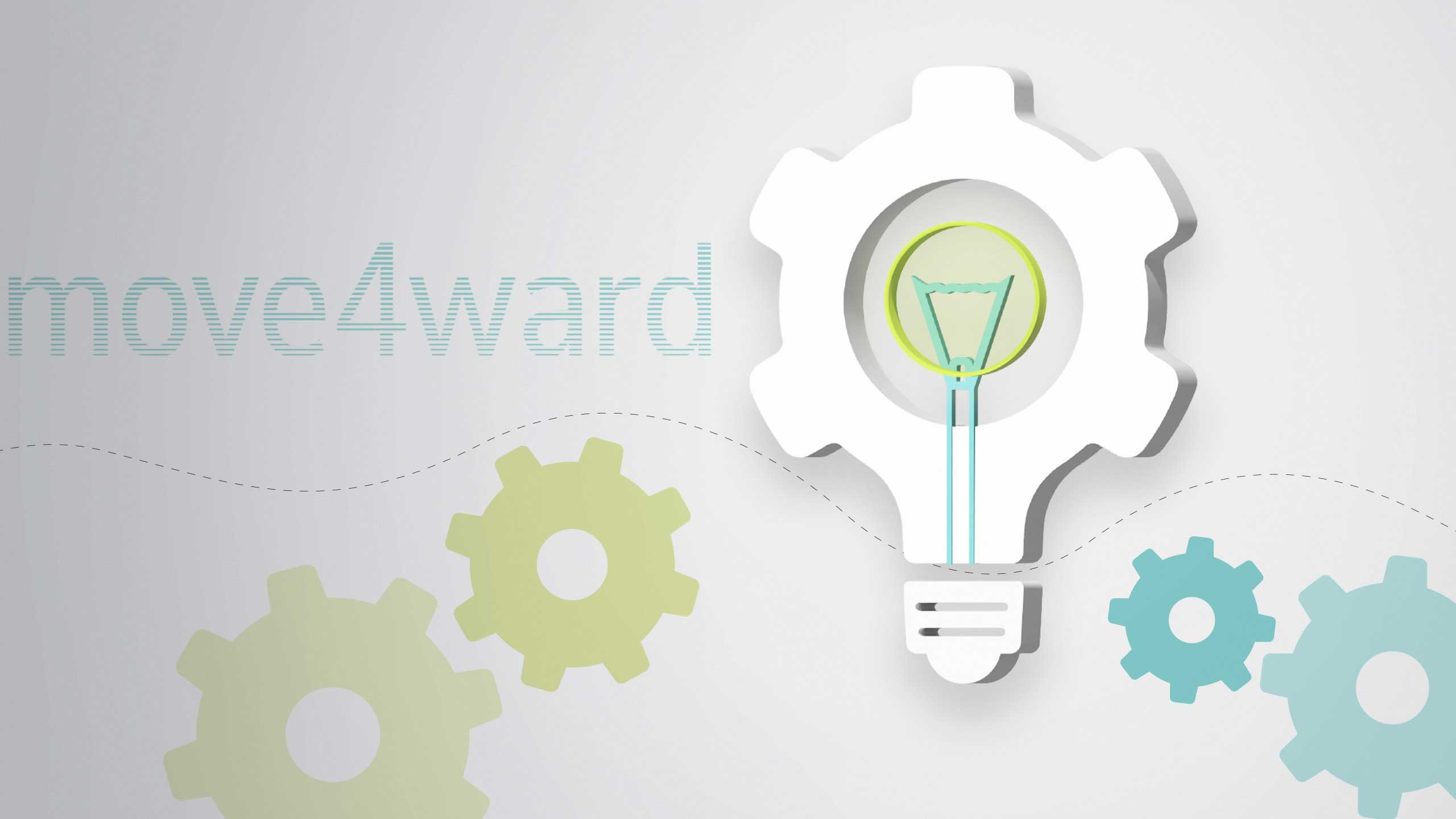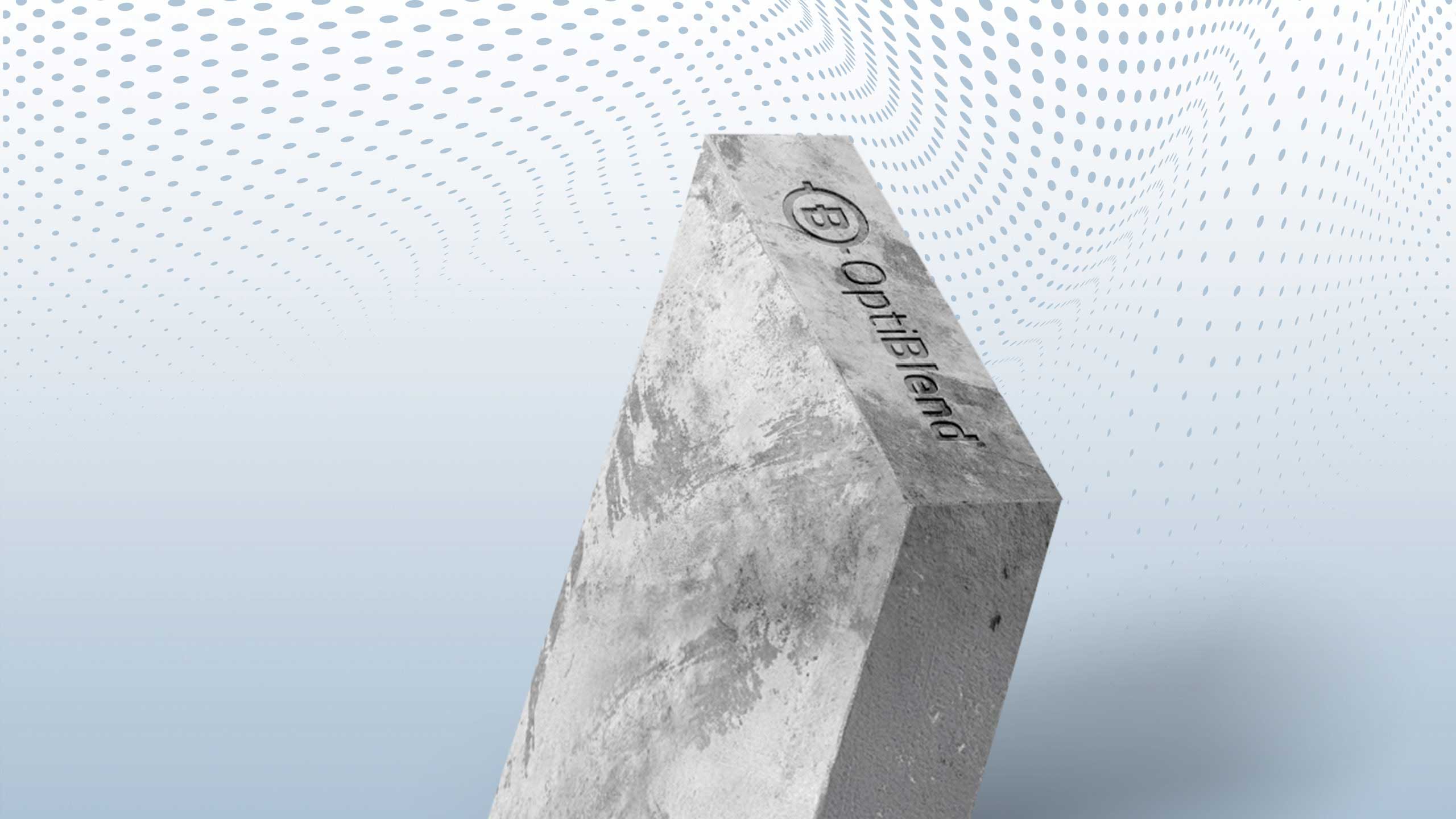It’s a local peculiarity: In Wesermünder Straße in the Düsseldorf harbour, two of the Group’s construction materials production plants are located just a stone’s throw away from each other. One plant produces recycled aggregates from soil and construction waste, while the other produces secondary aggregates from residues from the Flingern waste incineration plant. During processing in the respective installations, scrap iron is recovered from both material streams using overband magnets, Incinerator bottom ash (IBA) additionally contains valuable non-ferrous metals (NF metals) such as copper and aluminium, which are recovered using eddy current separators. The recovery rate is subject to numerous influencing factors, which is why IBA processing plants are constantly checked for their degree of efficiency.
Production and quality surveillance
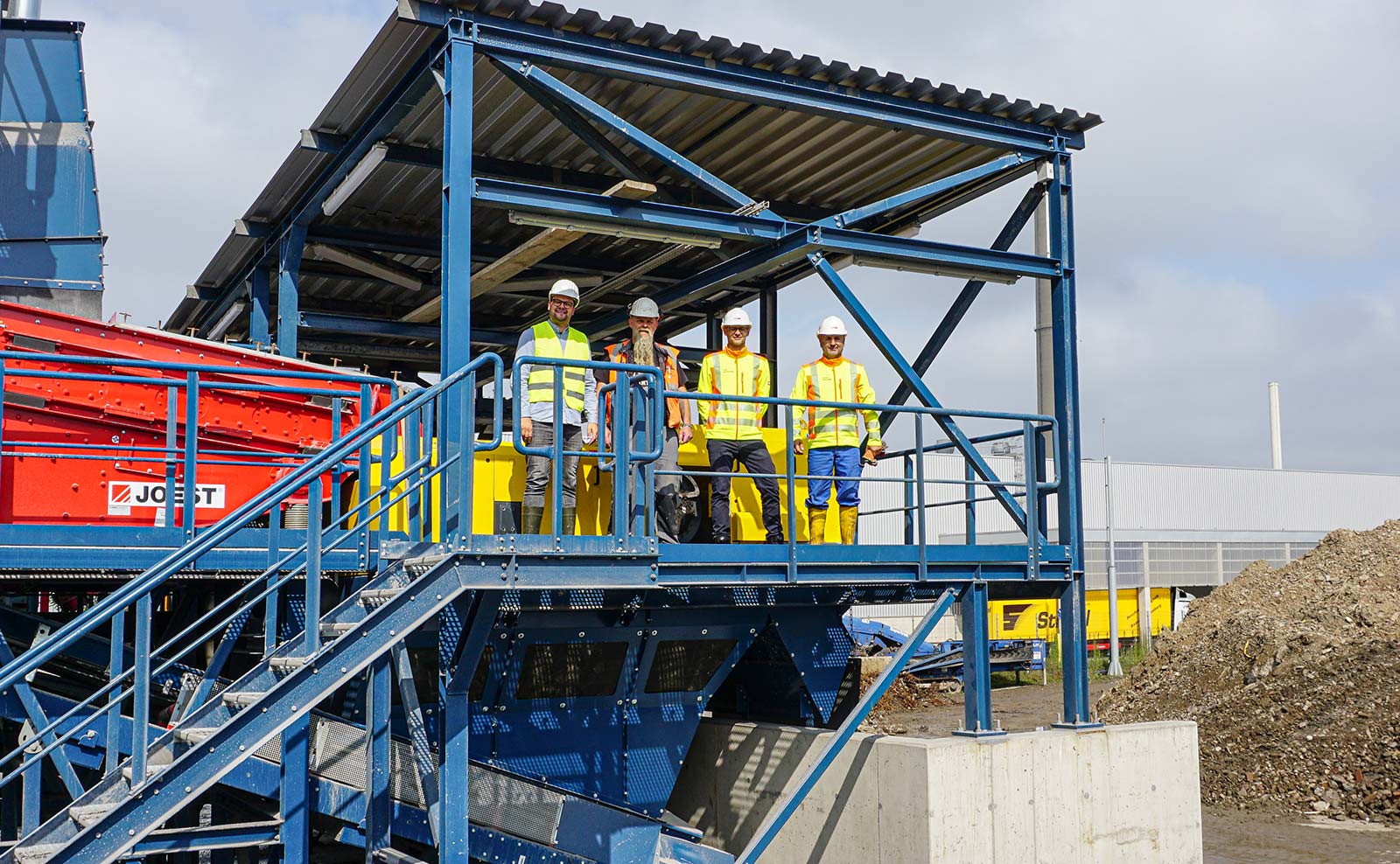
The colleagues of B + R und REMEX are pleased with the successful completion (from left to right.): Alexander Kuhnigk, Olaf Tappe, Tim Autenrieth und Ihsan Alpaslan
When Alexander Kuhnigk looks out of his office window in Düsseldorf harbour, he has a clear view of the recycling plant operated by the B + R Baustoff-Handel und Recycling Düsseldorf-Neuss GmbH, a REMEX affiliated company. The authorised agent is responsible for quality assurance and project management at B + R and is also responsible for production and efficiency control at the Düsseldorf IBA processing plant. In this context, he is also responsible for monitoring the recovery of non-ferrous metals. To this end, samples of the metal concentrates are examined on a daily basis. “Concentrates are composed of metals and adhering ash. In our laboratory, we test the proportion of non-ferrous metals in the concentrate on behalf of REMEX to ensure that it complies with the target specifications. If necessary, the individual units of the processing plant are fine-tuned. In addition, we have analyses carried out to determine the composition of the metals contained,” explains Alexander Kuhnigk.
Potential in the range up to 4 mm
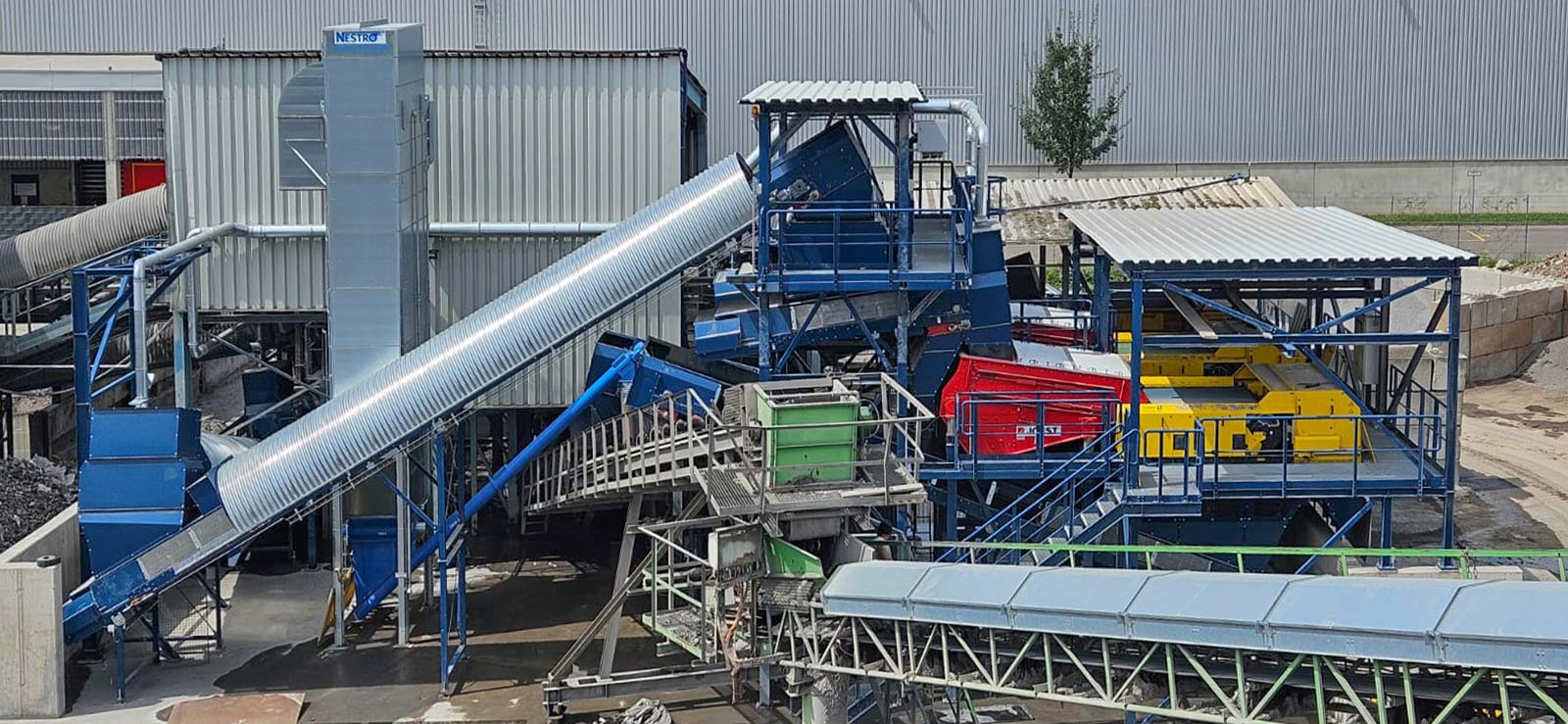
Zusätzliche NE-Abscheider am Feinkorn steigern die Rückgewinnung von NE-Metallen
The test results are analysed at regular intervals by REMEX’s technical department to identify potential for optimisation and supplemented with further data on resource potential. Details on the purity and composition of the metal concentrates are used to compare the potential. “All the data indicated that the recycling rate of non-ferrous metals could be increased by adding additional non-ferrous separators for the fine fraction. The calculations were clear, which is why we decided to invest in an expansion,” says Tim Autenrieth, Technical Director at REMEX GmbH.
Plant expansion during ongoing operations
The project was planned and implemented jointly by REMEX and B + R, and the plant continued to operate throughout the entire construction period, with the exception of a few days. Covered conveyor belts protect the fine material flow from the weather and transfer it to two parallel eddy current separators. The separated non-ferrous metals are discharged into a separate storage box. The cleaned fine mineral fraction is fed into the existing storage area via a system of several extraction belts. From the perspective of the responsible plant engineer Ihsan Alpaslan and the plant manager Olaf Tappe, the results speak for themselves:
“The expanded plant has been in full operation since late summer, and we are seeing a significant improvement in metal recovery in the fine grain. The work has definitely paid off!ohnt!”
